
Top Low Maintenance Indoor Succulent Plants for Easy Care and Beauty
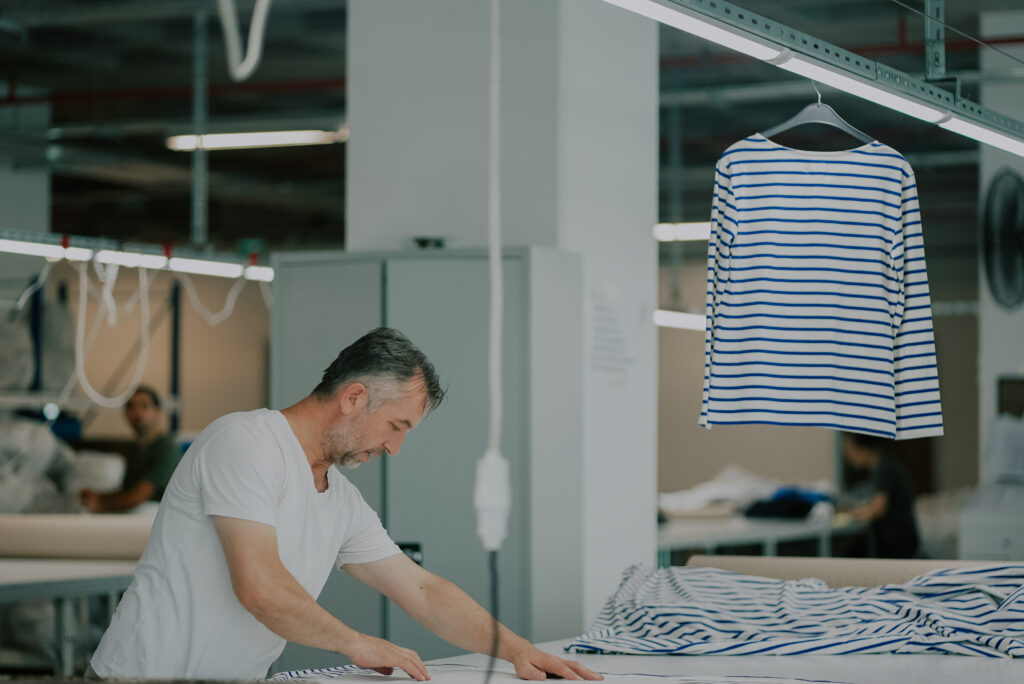
Indoor plants have become increasingly popular in recent years, not only for their aesthetic appeal but also for their numerous health benefits. Among the various types of indoor plants, succulents have gained a significant following due to their unique appearance, low maintenance requirements, and ability to thrive in a variety of environments. Succulents are plants that store water in their leaves, stems, or roots, allowing them to survive in arid conditions and making them an excellent choice for those who lack a green thumb or have a busy lifestyle.
We will explore some of the top low maintenance indoor succulent plants that are not only easy to care for but also add beauty and charm to any living space. We will discuss the characteristics of each plant, including their preferred lighting conditions, watering needs, and tips for promoting healthy growth. Whether you are a plant enthusiast looking to expand your collection or a beginner looking to start your indoor garden, this article will provide you with the necessary information to choose the perfect low maintenance succulent plants for your home.
- Choose succulents such as aloe vera or jade plant, which require minimal care
- Place your succulents in well-draining soil to prevent overwatering
- Water your succulents sparingly, allowing the soil to dry out between waterings
- Provide your succulents with ample sunlight, as they thrive in bright, indirect light
- Avoid placing your succulents in areas with extreme temperature fluctuations
- Fertilize your succulents with a diluted, balanced fertilizer during their growing season
- Prune any dead or damaged leaves to maintain the health and appearance of your succulents
- Consider grouping your succulents together, as they benefit from increased humidity
- Use decorative pots or containers that have drainage holes to prevent root rot
- Research the specific care needs of each succulent variety to ensure their long-term health and beauty
- Frequently Asked Questions
Choose succulents such as aloe vera or jade plant, which require minimal care
Succulents are a popular choice for indoor plants due to their low maintenance nature and stunning beauty. If you're looking to add some greenery to your living space without the hassle of constant care, consider opting for succulents like aloe vera or jade plant.
Aloe vera, known for its medicinal properties, is not only beneficial but also incredibly easy to care for. It thrives in bright, indirect sunlight and only requires watering every two to three weeks. This succulent is highly resilient and can withstand periods of neglect, making it an ideal choice for busy individuals or those new to plant care.
Jade plant, also known as Crassula ovata, is another low maintenance succulent that adds a touch of elegance to any space. With its thick, fleshy leaves and vibrant green color, the jade plant is a classic favorite among succulent enthusiasts. It prefers bright, indirect light and should be watered sparingly, allowing the soil to dry out between waterings. With proper care, the jade plant can grow into a beautiful, tree-like succulent that will surely catch the eye of your visitors.
When it comes to succulents, it's important to remember that they are native to arid environments and have evolved to store water in their leaves. Therefore, overwatering is one of the biggest mistakes people make when caring for succulents. These plants thrive in well-draining soil, so be sure to use a potting mix specifically formulated for succulents or cacti.
In addition to aloe vera and jade plant, there are numerous other low maintenance succulent options available. Some popular choices include the snake plant (Sansevieria), which can tolerate low light conditions and has air-purifying properties, and the echeveria, with its rosette-shaped leaves and variety of colors.
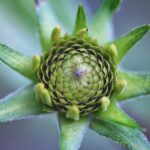 Can You Mist Succulents Every Day? What You Need to Know
Can You Mist Succulents Every Day? What You Need to KnowKey takeaways:
- Aloe vera and jade plant are great options for low maintenance indoor succulents.
- Both plants require minimal care and can withstand periods of neglect.
- Ensure your succulents receive bright, indirect light and are not overwatered.
- Consider using well-draining soil specifically formulated for succulents.
- Explore other low maintenance succulent varieties such as snake plant and echeveria.
With their unique shapes and vibrant colors, low maintenance indoor succulents can effortlessly enhance the beauty of any home or office space. Whether you're a busy individual or simply want to add some greenery to your life, these plants are a wonderful choice that requires minimal effort while providing maximum visual impact.
Place your succulents in well-draining soil to prevent overwatering
One of the most important factors in successfully caring for indoor succulent plants is ensuring they are planted in well-draining soil. Succulents have shallow root systems that are prone to rot if they sit in waterlogged soil for long periods of time. To prevent overwatering, you can mix regular potting soil with perlite or sand to create a well-draining mixture.
When choosing a pot for your succulents, opt for one with drainage holes at the bottom to allow excess water to escape. This will help prevent water from pooling in the bottom of the pot and potentially causing root rot. If you already have a pot without drainage holes that you'd like to use, you can place a layer of gravel or small rocks at the bottom to create a drainage layer.
Remember to water your succulents sparingly and only when the soil is completely dry. Overwatering is one of the most common mistakes made when caring for succulents, so it's important to err on the side of underwatering rather than overwatering. Stick your finger into the soil to check for moisture before deciding to water your plants.
In addition to well-draining soil, succulents also thrive in bright, indirect light. Place them near a window or in a location that receives several hours of bright, filtered sunlight each day. Avoid placing your succulents in direct sunlight, especially during the hottest parts of the day, as this can scorch the leaves and cause damage to the plants.
By providing your indoor succulent plants with the right soil and light conditions, you can ensure they remain healthy and beautiful with minimal effort. Remember to check the moisture levels in the soil regularly and adjust your watering schedule accordingly. With a little care and attention, your low-maintenance succulents will thrive and bring beauty to your indoor space.
 Epsom Salt for Succulent Plants: A Complete Guide
Epsom Salt for Succulent Plants: A Complete GuideWater your succulents sparingly, allowing the soil to dry out between waterings
When it comes to indoor plants, succulents are a popular choice for their low maintenance and stunning beauty. These plants have adapted to survive in arid conditions, making them perfect for those who may not have a green thumb or tend to forget about watering their plants.
One key aspect of caring for indoor succulents is to water them sparingly. Overwatering can lead to root rot and other issues, so it's important to allow the soil to dry out between waterings. A general rule of thumb is to water your succulents when the top inch of soil feels dry. This can vary depending on factors such as the type of succulent, the size of the pot, and the temperature and humidity of your home.
Remember, succulents are built to store water in their leaves and stems, so they can withstand longer periods without moisture. It's always better to underwater than to overwater your succulents.
Additionally, it's important to use well-draining soil specifically formulated for succulents. This type of soil allows excess water to flow out of the pot, preventing waterlogged roots.
To further enhance the low maintenance aspect of your indoor succulents, consider using a self-watering container. These containers have built-in reservoirs that slowly release water to the plants as needed, reducing the risk of overwatering.
Remember, each succulent has its own unique care requirements, so it's essential to research and understand the specific needs of the succulents you choose to grow indoors. Some succulents may require more sunlight, while others prefer indirect light. Providing the appropriate lighting conditions will ensure the health and beauty of your succulents.
Overall, with a little attention to watering and lighting, you can enjoy the beauty of low maintenance indoor succulents. Their unique shapes, colors, and textures will add a touch of natural elegance to any space, without requiring too much effort on your part.
 Is It Normal for My Succulent to Have an Unusual Growth?
Is It Normal for My Succulent to Have an Unusual Growth?Provide your succulents with ample sunlight, as they thrive in bright, indirect light
If you want your indoor succulent plants to thrive and stay beautiful with minimal effort, providing them with ample sunlight is crucial. Succulents are known for their ability to store water in their leaves and stems, which allows them to survive in dry conditions. However, to truly flourish, they need bright, indirect light.
Place your succulents near a window that receives a good amount of sunlight throughout the day. South-facing windows are usually the best, as they provide the most intense light. If you don't have access to a window with sufficient sunlight, you can also use artificial grow lights to supplement their light requirements.
Remember to rotate your succulents every few weeks to ensure even growth. They tend to bend towards the light source, so rotating them will help prevent them from becoming lopsided.
It's important to note that while succulents love sunlight, direct sunlight for prolonged periods can scorch their leaves. If you notice any signs of sunburn, such as brown spots or discoloration, move your succulents to a spot with slightly less direct sunlight.
Pro tip: If you're unsure whether your succulents are getting enough light, observe their growth. If they start stretching or leaning towards the light source, it's a sign that they need more sunlight.
Avoid placing your succulents in areas with extreme temperature fluctuations
 Can Succulents Die from Overwatering and Lack of Sunlight?
Can Succulents Die from Overwatering and Lack of Sunlight?Why temperature fluctuations are harmful to succulents
Succulents are known for their ability to thrive in dry and arid conditions. However, they are not as tolerant when it comes to extreme temperature fluctuations. Rapid changes in temperature can stress your succulents and even lead to irreversible damage.
When exposed to extreme heat, succulents can become dehydrated and wilt. On the other hand, sudden drops in temperature can cause their cells to freeze and burst. Therefore, it's crucial to avoid placing your indoor succulents in areas with significant temperature fluctuations.
Best locations for your indoor succulents
To ensure the well-being of your low maintenance indoor succulent plants, it's essential to choose the right locations within your home. Here are a few ideal spots:
- Natural light: Most succulents need at least six hours of sunlight each day. Place them near a south-facing window where they can receive ample indirect sunlight.
- Avoid direct sunlight: While succulents love sunlight, intense direct sunlight can scorch their leaves. If your succulents are near a window, consider using sheer curtains or blinds to filter the sunlight.
- Consistent temperature: Find a spot in your home where the temperature remains relatively stable throughout the day. Avoid placing succulents near air vents, radiators, or drafty windows, as these areas tend to experience temperature fluctuations.
- Humidity levels: Succulents prefer dry air, so it's best to avoid areas with high humidity, such as bathrooms or kitchens. Opt for rooms with average humidity levels.
Protecting your succulents during extreme weather conditions
Even with all the precautions, sometimes extreme weather conditions are unavoidable. Here are a few tips to protect your indoor succulents during such times:
- Move them indoors: If you know extreme weather is approaching, it's best to bring your succulents indoors. Find a suitable spot where they can continue to receive adequate light and temperature control.
- Use grow lights: During periods of low light or extended cloudy days, consider using grow lights to supplement the natural light your succulents receive. This will help them maintain their growth and health.
- Monitor humidity: Extreme weather conditions can often lead to changes in humidity levels. Keep an eye on the humidity in the room where your succulents are located and make adjustments if necessary.
- Water sparingly: During extreme weather conditions, succulents may not require as much water as they do during their active growing season. Be cautious not to overwater them, as this can lead to root rot.
By following these guidelines, you can ensure that your low maintenance indoor succulent plants not only survive but thrive in their optimal environments.
Fertilize your succulents with a diluted, balanced fertilizer during their growing season
Fertilizing your succulents is an essential part of their care routine, especially during their growing season. By providing them with the right nutrients, you can ensure their health and promote their vibrant growth. To achieve optimal results, it is crucial to use a diluted, balanced fertilizer specifically formulated for succulents.
When selecting a fertilizer for your indoor succulents, look for one with an N-P-K ratio (nitrogen, phosphorus, and potassium) of around 2-1-2. This balanced ratio will provide the necessary nutrients without overwhelming the plants. Additionally, opt for a water-soluble or liquid fertilizer, as they are easier to apply and can be absorbed by the plants more effectively.
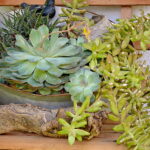 Trimming Succulents: Can I Safely Prune the Top of an Overgrown Plant?
Trimming Succulents: Can I Safely Prune the Top of an Overgrown Plant?How to fertilize indoor succulents
Follow these steps to fertilize your indoor succulents:
- Choose the right time: Fertilize your succulents during their active growth phase, which typically occurs in spring and summer. Avoid fertilizing during winter when the plants are dormant.
- Dilute the fertilizer: Mix the fertilizer with water according to the package instructions. It is crucial to dilute the fertilizer to prevent burning the plants' roots.
- Water the soil: Before applying the fertilizer, water the soil thoroughly. This step ensures that the nutrients distribute evenly and prevents direct contact between the fertilizer and the succulent's leaves, which can cause damage.
- Apply the fertilizer: Pour the diluted fertilizer mixture onto the soil around the base of the succulent. Be careful not to pour it directly on the plant's leaves or stem.
- Monitor and adjust: Keep an eye on your succulents after fertilizing. If you notice any signs of over-fertilization, such as burnt tips or discoloration, adjust the concentration of the fertilizer or reduce the frequency of fertilization.
Benefits of fertilizing indoor succulents
Fertilizing your indoor succulents offers several benefits:
- Promotes growth: Properly fertilized succulents experience enhanced growth, producing more vibrant leaves and developing a fuller appearance.
- Strengthens root system: Nutrient-rich soil encourages the development of a robust root system, supporting the overall health and stability of the succulent.
- Enhances flowering: Some succulents produce stunning blooms when provided with the right nutrients. Fertilizing can stimulate the blooming process and result in an array of vibrant flowers.
- Prevents nutrient deficiencies: Succulents grown in nutrient-poor soil may exhibit signs of nutrient deficiencies, such as yellowing leaves or stunted growth. Fertilizing helps prevent these issues and ensures the plants receive the necessary nutrients.
Remember, while fertilizing is beneficial, it is essential not to overdo it. Succulents thrive in well-draining soil and are adapted to survive in nutrient-poor conditions. Therefore, moderation is key when it comes to fertilizing indoor succulents.
Prune any dead or damaged leaves to maintain the health and appearance of your succulents
When it comes to low maintenance indoor plants, succulents are a top choice for many plant enthusiasts. These hardy plants require minimal care and attention, making them perfect for busy individuals or those with a less-than-green thumb.
One important aspect of succulent care is pruning. Pruning your succulents not only helps maintain their health but also enhances their overall appearance. It involves removing any dead or damaged leaves to promote new growth and prevent the spread of diseases.
Here are a few tips to help you effectively prune your low maintenance indoor succulent plants:
 Can Succulents Survive a Freeze Unprotected?
Can Succulents Survive a Freeze Unprotected?1. Use clean, sharp tools
- Before you begin pruning, ensure that your tools are clean and sharp. Dirty or dull tools can introduce bacteria or cause unnecessary damage to the plants. Clean your tools with rubbing alcohol or a mixture of water and bleach to sterilize them.
2. Identify dead or damaged leaves
- Closely examine your succulent plants and identify any leaves that are discolored, dried out, or damaged. These leaves are usually non-functional and can hinder the plant's overall growth and appearance.
3. Gently remove the selected leaves
- Using your clean, sharp tools, carefully remove the identified dead or damaged leaves. Make sure to cut as close to the base of the leaf as possible without damaging the healthy parts of the plant.
4. Allow the wounds to heal
- After pruning, it's essential to allow the wounds to heal properly. Place the pruned succulents in a dry and well-ventilated area for a few days to allow the cuts to callus over. This helps prevent the risk of infections.
5. Dispose of pruned leaves properly
- Dispose of the pruned leaves in a separate container or compost pile. Do not leave them near your succulents, as they can attract pests or introduce diseases.
Regularly pruning your low maintenance indoor succulent plants will not only keep them healthy but also enhance their aesthetic appeal. By following these simple tips, you can easily care for your succulents and enjoy their beauty for years to come.
Consider grouping your succulents together, as they benefit from increased humidity
When it comes to indoor plants, succulents have gained immense popularity due to their unique shapes, vibrant colors, and minimal care requirements. These desert plants have the ability to store water in their leaves, making them resilient and perfect for those with busy schedules or lacking a green thumb.
If you're looking to create a stunning display of low maintenance indoor succulents, consider grouping them together. Succulents thrive in environments with increased humidity, and by clustering them, you can create a microclimate that mimics their native habitats.
Here are some top low maintenance indoor succulent plants that you can consider for easy care and beauty:
Jade Plant (Crassula ovata)
The Jade Plant is one of the most popular succulents due to its striking appearance and ease of care. With its glossy, oval-shaped leaves, this plant adds a touch of elegance to any indoor space. It requires bright, indirect light and only needs to be watered when the top inch of soil is dry. Overwatering can lead to root rot, so it's important to let the soil dry out between waterings.
Aloe Vera (Aloe barbadensis)
Aloe Vera is not only a beautiful succulent but also known for its healing properties. This plant thrives in bright, indirect light and prefers to dry out between waterings. Aloe Vera leaves contain a gel-like substance that can be used to soothe burns and moisturize the skin. It's a versatile plant that adds a touch of greenery to your indoor space while providing potential health benefits.
 Protecting Succulents: Tips for Cold Weather Survival
Protecting Succulents: Tips for Cold Weather SurvivalZebra Plant (Haworthia fasciata)
The Zebra Plant is a compact succulent known for its eye-catching white stripes that resemble a zebra's stripes. It prefers bright, indirect light and can tolerate lower light conditions. This plant requires infrequent watering, as overwatering can cause its roots to rot. The Zebra Plant is a great addition to any succulent collection, adding a unique pattern and texture.
Snake Plant (Sansevieria trifasciata)
The Snake Plant, also known as Mother-in-Law's Tongue, is a popular choice for indoor spaces due to its air-purifying properties. It has long, upright leaves that come in various shades of green. This succulent can tolerate a wide range of light conditions, from bright indirect light to low light. It only requires occasional watering and can withstand neglect, making it perfect for those who tend to forget about their plants.
Sedum Morganianum (Burro's Tail)
The Sedum Morganianum, commonly known as Burro's Tail, is a trailing succulent with delicate, trailing stems covered in plump, blue-green leaves. It prefers bright, indirect light and needs well-draining soil to prevent root rot. This succulent is drought-tolerant and only requires occasional watering. Its trailing nature makes it a great choice for hanging baskets or placed on high shelves to showcase its cascading beauty.
By incorporating these low maintenance indoor succulent plants into your home or office, you can enjoy the beauty of nature without the hassle of constant care. Remember to provide them with the appropriate amount of light, water sparingly, and avoid overwatering. With their unique shapes and colors, these succulents will surely enhance the aesthetic appeal of any space.
Use decorative pots or containers that have drainage holes to prevent root rot
When it comes to choosing the right containers for your indoor succulent plants, it's important to prioritize drainage. Succulents are prone to root rot if their roots sit in water for too long. To prevent this, opt for decorative pots or containers that have drainage holes. These holes allow excess water to escape, ensuring that the soil stays well-drained and preventing waterlogging.
Additionally, using decorative pots can add a touch of style to your indoor space. From ceramic pots to terracotta planters, there are plenty of options available to suit your personal taste and home decor. Just be sure to check that they have drainage holes to promote healthy succulent growth.
 Using Regular Miracle Gro Fertilizer: Is it Suitable for Succulents?
Using Regular Miracle Gro Fertilizer: Is it Suitable for Succulents?Research the specific care needs of each succulent variety to ensure their long-term health and beauty
When it comes to indoor plants, succulents are a popular choice due to their low maintenance requirements and stunning beauty. These desert plants have adapted to survive in arid conditions, making them perfect for those who are not blessed with a green thumb or have a busy lifestyle.
Why Choose Succulents?
Succulents are known for their ability to store water in their leaves, stems, and roots, allowing them to withstand long periods without regular watering. This unique adaptation makes succulents highly resilient and ideal for those who tend to forget to water their plants or are frequently away from home.
- 1. Aloe Vera (Aloe barbadensis): This versatile succulent not only adds beauty to your indoor space but also offers medicinal properties. Aloe vera plants require minimal care, preferring bright indirect light and well-draining soil. They are well-known for their gel-filled leaves, which can be used to soothe burns and skin irritations.
- 2. Jade Plant (Crassula ovata): The jade plant is a classic succulent that is often associated with good luck and prosperity. With its thick, fleshy leaves and tree-like appearance, it adds a touch of elegance to any indoor setting. Jade plants thrive in bright light and prefer well-draining soil.
- 3. Snake Plant (Sansevieria trifasciata): Also known as "mother-in-law's tongue," the snake plant is a hardy succulent with tall, upright leaves. It is highly tolerant of low light conditions and neglect, making it an excellent choice for beginners or those with limited sunlight in their homes.
Remember to research the specific care needs of each succulent variety to ensure their long-term health and beauty. While succulents are generally low maintenance, they still require proper watering, light, and soil conditions to thrive. Avoid overwatering, as this can lead to root rot, and provide adequate drainage to prevent waterlogged soil.
- Place your succulents in a location that receives bright, indirect sunlight for a few hours each day.
- Water your succulents thoroughly, allowing the soil to dry out between waterings. Succulents are drought-tolerant plants and can survive with less water.
- Use a well-draining potting mix specifically formulated for succulents or add perlite or sand to improve drainage.
- Fertilize your succulents sparingly, usually once or twice a year during the growing season.
By following these simple care tips and selecting the right succulent varieties, you can enjoy the beauty of these low maintenance indoor plants without much effort. So go ahead and bring some greenery and natural charm into your space with these easy-to-care-for succulents!
Frequently Asked Questions
1. How often do indoor succulents need to be watered?
Indoor succulents typically need to be watered every 1-2 weeks, allowing the soil to dry out between waterings.
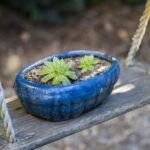 Succulent Care on Wood: A Guide to Proper Maintenance
Succulent Care on Wood: A Guide to Proper Maintenance2. What kind of light do indoor succulents require?
Most indoor succulents thrive in bright, indirect light. They should be placed near a window that receives a few hours of sunlight each day.
3. Can indoor succulents be grown in pots without drainage holes?
While it is possible to grow succulents in pots without drainage holes, it increases the risk of overwatering and root rot. It is recommended to use pots with drainage holes for optimal plant health.
4. How do I propagate indoor succulents?
Indoor succulents can be easily propagated by taking stem or leaf cuttings. Simply let the cuttings dry for a few days, then plant them in well-draining soil and water sparingly until new roots develop.
 Reviving an Overwatered Succulent: Tips to Save Your Plant
Reviving an Overwatered Succulent: Tips to Save Your PlantIf you want to read more articles similar to Top Low Maintenance Indoor Succulent Plants for Easy Care and Beauty, you can visit the Care and Maintenance category.

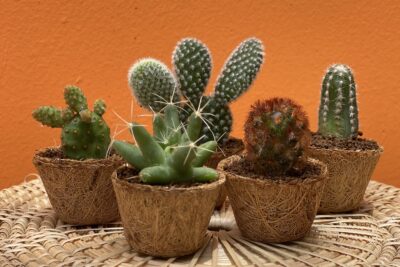
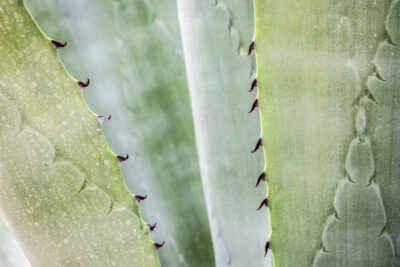



You Must Read